Kalpaka vriksha is a concept in the ancient Indian practice of Vaastu Shastra, which is a form of traditional architecture and design. It is considered to be a symbol of growth and abundance and is often depicted in Hindu mythology as a tree that grants wishes to those who seek its blessings.

Things we covered for you
In this article, you will learn about the principles and symbolism behind the Kalpaka vriksha tree in vaastu shastra, as well as its significance and role in traditional Indian architecture and design.
What is the Kalpavriksha Tree?
Kalpaka Vriksha (Literal Sanskrit meaning: Age-tree) is a mythological tree cited in many Indian religions and scriptures and described as the world tree or the tree of life. The symbols and images of the tree represent a giant tree with voluminous branches and lush foliage.
Mythological Significance of the Kalpaka Vriksha
The motif of a mythological Tree of life is something that you will find across the world and cultures. The kalpakavriksha, much like the tree of life is associated with the concept of eternal life and renewal.
The Kalpavriksha tree is said to grant all wishes and fulfil all desires, while Yggdrasil is described as an evergreen tree that is constantly replenished by the spring of eternal youth.
You will observe that there are striking similarities between the Kalpaka Vriksha(Vedic mythology) the Yggdrasil (Norse mythology) and the Bodhi tree (Buddhist mythology).
Physical Characteristics of the Kalpaka Vriksha Tree
Different states of India have specific trees that are referred to as Kalpavrikshas.
- The Banyan tree, also called the Nyagrodha tree, which grows throughout the country is referred to as Kalpavriksha or Kaplaptaru because of its ability to amply provide for human needs such as shade, food, and medicine and its leaves and roots can be used in religious ceremonies.
- Similarly, the coconut tree is sometimes referred to as “Kalpavriksha” because every part of it is useful in one way or another, including for food, drink, oil, rope, huts, fans, mats, sugar, boats and more.
- The Ashwatha tree, also known as the sacred fig tree, is known as Kalapvriksha and it is said that deities and Brahma reside in it.
- The Mahua tree, found in the regions of tribal people, holds an important place in the day-to-day life of the tribal people and is like the Kalpavriksha wish tree.
- The Shami tree, found in the desert areas of the country and known as Ajmer or Jaant is called Kalpavriksha, in the local dialect. The tree has deep roots up to a depth of 17-25 meters, helps to prevent erosion of sandy soil, stays green during drought conditions, and is an important source of food for animals.
The Role of the Kalpavriksha Tree in Vastu Shastra
Kalapaka Vriksha Tree Benefits:Vaastu of the Kalpavriksha Tree
Vaastu Shastra asserts that the Kalpakataru can balance the five elements and improve the flow of positive energy in a home or building.
The tree can be incorporated into the design of a home or building to enhance the overall prosperity and well-being of the space. The Kalpavriksha tree is also associated with the concept of eternal life and renewal and is said to grant all wishes and fulfil all desires.
The location and placement of the Kalpavriksha Tree
The Kalpavriksha tree can be used to enhance the positive energy flow, and bring prosperity and well-being to the inhabitants of a home or building.
For a home, the Kalpavriksha tree is ideally placed
- near the entrance of your home
- in the east or north-east direction
as these are considered to be the directions of wealth and prosperity.
You can have any number of Kalpakavriksha trees in your home as you, please.
How to Use the Kalpavriksha Tree to Enhance the Energy of Your Home
Here are a few ways that you can use the Kalpavriksha tree to improve the flow of positive energy in your home–
Fix the Placement of the Kalpakavriksha Tree
One of the most important ways to use the Kalpavriksha tree to improve the flow of positive energy in a home is by placing it in the right location.
Vastu Shastra says that the east and northeast corners of a home are the directions of wealth and prosperity. Putting a Kalpavriksha tree in the east or northeast corner of a home can bring the people who live there luck and plenty.
Choose a Tree Size that fits Your Home
The size of the Kalpavriksha tree can also be used to enhance the energy of a space. A large tree is said to be more powerful than a small one and can be used to enhance the energy of a larger area, such as a living room or a backyard.
You don’t need to worry about not having space for planting an entire tree. It is the motif of the Kalpakavriksha that will bring you the Vaastu benefits.
You can incorporate the Kalpakavriksha tree house design by adding
- A Kalpavriksha tree’s image
- or a bonsai kalpaka vriksha
- or a bronze kalpakavriksha tree
Some experts recommend arranging the plant pots in your garden in the pattern of a Kalpak tree to bring the same benefits.
Maintenance for Kalpaka Vriksha Tree
Proper care and maintenance of the Kalpavriksha tree are important to ensure that it stays healthy and continues to enhance the energy of your home. This could mean giving the tree enough water and sunlight, keeping pests and diseases away from it, and trimming it as needed.
But If you are installing a brass kalpavriksha tree, you don’t need to worry about maintenance.
Praying and Ritual practice for a Kalpakavriksha Tree
According to Vastu Shastra, offering prayers and performing rituals under the Kalpavriksha tree can help to amplify the positive energy of the tree and the surrounding area.Vastu Shastra says that praying and doing rituals under the Kalpavriksha tree can help make the tree and the area around it have more positive energy.
The Role of the Kalpavriksha Tree in Commercial Buildings
In commercial properties, the tree can be used to enhance the flow of positive energy and bring prosperity and success to the business. However, it’s important to choose the right species of Kalpavriksha tree, as some species are considered more auspicious than others.
It is recommended that the tree should be planted in the east or northeast direction of the commercial building as these are considered auspicious directions for business and financial growth. Also, It can be placed in the reception area or in the front of the building, which can help to enhance the energy of the building and attract customers.
Botanical name of Kalpavriksha: 7 Trees considered Kalpaka Vriksha
Here are some of the trees that are known by the labelled as Kalpakavriksha with their English names and botanical names.
1. Banyan Tree
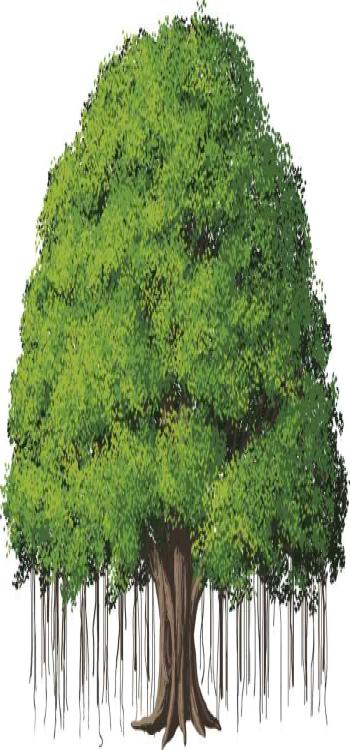
This tree is believed to bring prosperity, peace and stability to the home. It is often planted in the east or northeast direction of a home.
Scientific name: Ficus benghalensis
Fruits: The fruits of the Banyan tree are small and round, typically about 1 cm in diameter. They are not commonly consumed by humans but are eaten by birds and other animals.
Seeds: The seeds of the Banyan tree are contained within the fruit and can be propagated to grow new trees.
Wood: The wood of the Banyan tree is hard and strong and is used in construction and furniture making.
Leaves: The leaves of the Banyan tree are large and are used in traditional Ayurvedic medicine as a natural remedy for various ailments.
2. Coconut Tree

The coconut tree is believed to bring financial stability and positive energy to the home. It is often planted in the east or northeast direction of a home.
Read: Make Your Vastu for Overhead Water Tank Compliant for a Better Life
Scientific name: Cocos nucifera
Fruits: The fruits of the Coconut tree are the coconut itself which is used for food and drink. The water inside the coconut is a refreshing drink and the flesh can be used in cooking or as a source of oil.
Seeds: The seeds are the coconut itself can be used for planting and growing new coconut trees.
Wood: The wood from the trunk of the coconut tree is used for construction and furniture.
Leaves: The leaves of the coconut tree are large and can be used for thatching and for making baskets, mats, and brooms.
3. Ashwatha Tree
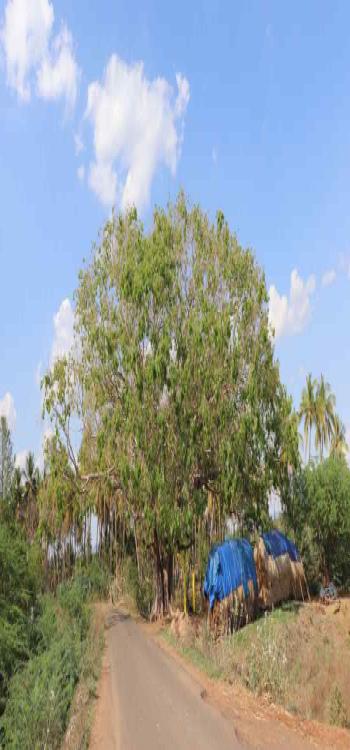
This tree is believed to be sacred and is associated with the worship of Lord Vishnu. Planting this tree in the east or northeast direction of a home is said to bring blessings and prosperity.
Scientific name: Ficus religiosa
The fruits and seeds of the ahswatha tree are not used for consumption. But the wood of the tree is strong and durable and so can be used for building furniture.
4. Mahua Tree
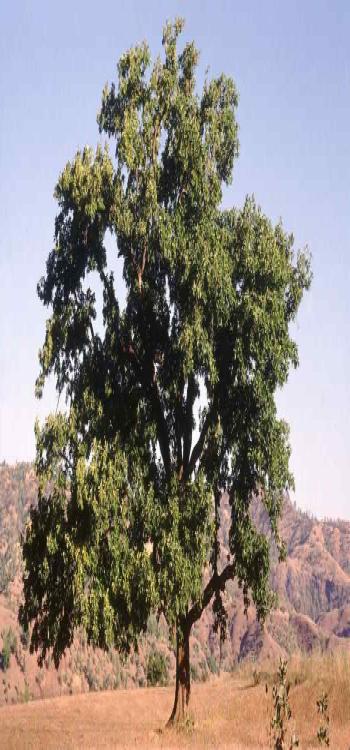
This tree is said to bring good luck and is associated with the worship of Lord Shiva. It is often planted in the north direction of a home.
Scientific name: Madhuca longifolia
Fruits: The fruits of the Mahua tree are large, round, and yellow when ripe. They are edible and used for making oil, alcohol, and confectionery.
Seeds: The seeds of the Mahua tree are used to extract oil which is used in cooking, cosmetics, and as biofuel.
The tree is mainly cultivated for its fruits, seeds and oil and not for wood
Read: Vastu Shastra for Home: Vastu Shastra Tips and Directions
5. Shami Tree
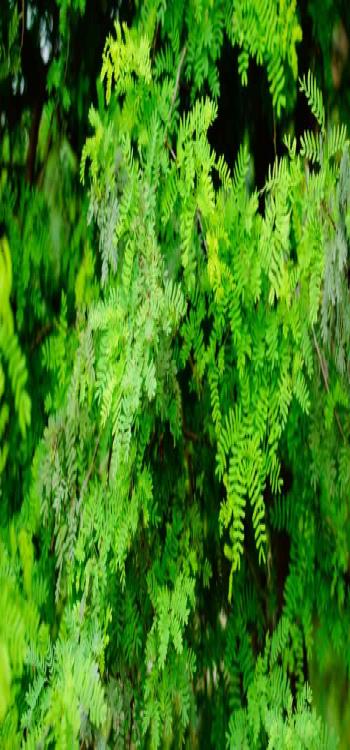
This tree is said to bring wealth and good luck. It is often planted in the east or northeast direction of a home.
Scientific name: Prosopis cineraria
Fruits: The fruits of the Shami tree are small, round, and brown. They are edible and are used to make sweet and nutritious food.
Seeds: The seeds of the Shami tree are used to make oil, which is used for cooking and lighting.
Wood: The wood of the Shami tree is used for construction and for making furniture.
6. Parijata Tree
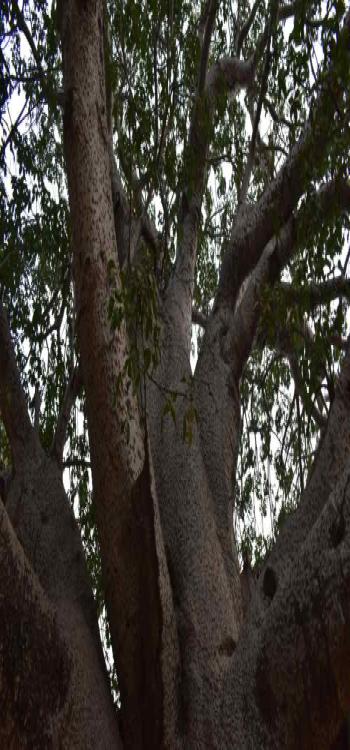
This tree is said to be the embodiment of divine beauty and is associated with the worship of Lord Krishna. It is often planted in the east or northeast direction of a home.
Scientific name: Nyctanthes arbortristis
Although the fruits and seeds of the tree are not used so much, the wood is occasionally used for construction.
7. Chyur Tree
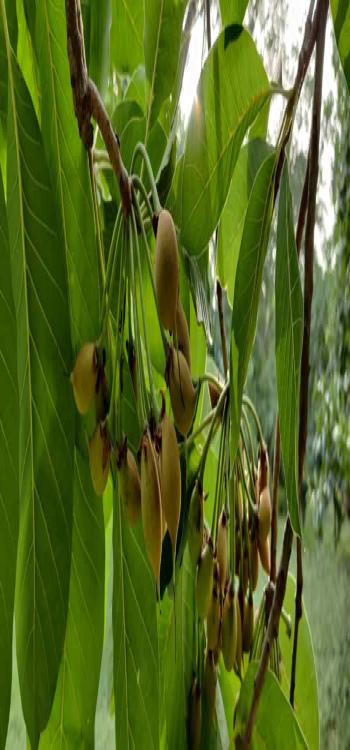
This tree is believed to bring abundance and good luck, often planted in the northeast direction of a home, it’s considered a powerful tree that can balance the five elements in the house and attract positive energy.
Scientific name: Diploknema butyr
The fruits and seeds of the Indian butter tree are used for consumption. The seed is used to extract oil which can be used as a lubricant. Wood although not popular, can be used for making furniture.
The mystical calming and harmonising abilities of the Kalpavriksha can bring a positive Vaastu impact on your home.
NoBroker Interior Design Team has the expertise and experience to help homeowners and businesses effectively incorporate a kalpavriksha tree into their Vaastu design. Transform your living space with the help of NoBroker’s team of Expert Interior Designers.

FAQs
The Kalpavriksha tree is a mythical tree that is said to fulfil all desires and grant all wishes. In Vastu Shastra, the Kalpavriksha tree is seen as a symbol of prosperity and well-being.
The Kalpavriksha tree is believed to have the ability to improve the flow of positive energy in a home or building. It is often incorporated into the design of a home or building to enhance the overall prosperity and well-being of the space.
The Kalpavriksha tree is often referred to as Kalpaka-vriksha, Kalpa-Taru, Kalpaka-taru etc.
Proper care and maintenance of a Kalpavriksha tree are important to ensure that it stays healthy and continues to enhance the energy of your home. This may include providing the tree with adequate water and sunlight, protecting it from pests and diseases, and trimming it as needed.
Yes, the Kalpavriksha tree can be used in the design of commercial buildings as well. It is believed that the Kalpavriksha tree can have a positive impact on the energy and success of a business, and can be incorporated into the design of an office or other commercial space.









